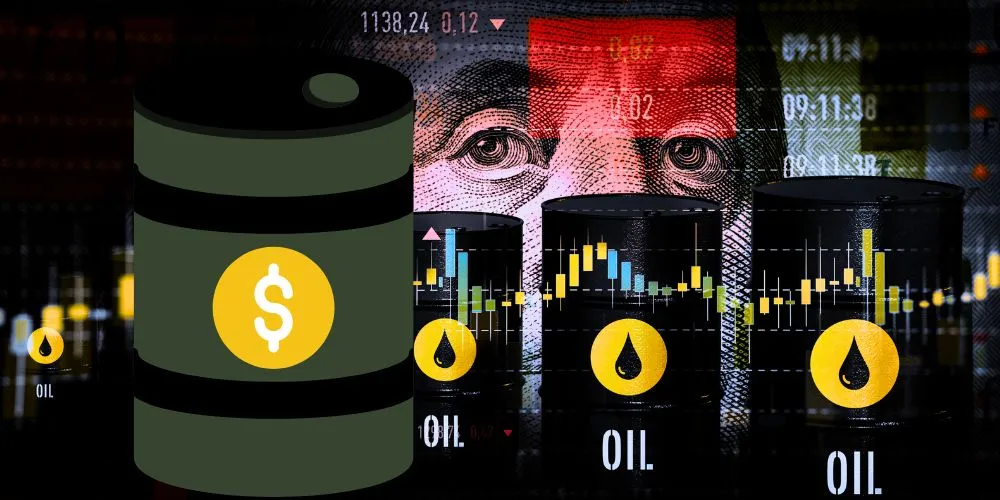Key Points:
- Oil prices fall as the U.S. dollar strengthens on concerns about delayed interest rate cuts due to inflation.
- Brent crude futures drop to $81.27 a barrel, while WTI falls to $76.14.
- Qatar plans to increase liquefied natural gas production despite global price declines.
- An anticipated decrease in U.S. oil stockpiles could support oil prices in the coming weeks.
Oil prices declined on Monday, extending losses from the previous session, as the U.S. dollar strengthened amidst concerns about higher-than-expected inflation potentially delaying cuts to U.S. interest rates.
Brent crude futures dropped by 35 cents, or 0.4%, to $81.27 a barrel, while U.S. West Texas Intermediate crude futures (WTI) fell by 35 cents, or 0.5%, to $76.14 a barrel. The strengthening of the U.S. dollar makes oil more expensive for holders of other currencies, contributing to the decline in oil prices.
Last week, Brent crude declined about 2%, and WTI fell more than 3% on indications that U.S. interest rate cuts could be delayed due to an uptick in inflation. The market sentiment experienced a retreat following a rally led by Nvidia last week, as expectations of higher-for-longer interest rates lifted the U.S. dollar, thereby pressuring commodity prices, according to independent analyst Tina Teng.
Oil prices have been trading between $70 and $90 a barrel since November, influenced by rising supply in the U.S. and concerns about weak demand in China despite OPEC+ supply cuts and ongoing geopolitical tensions. While the geopolitical risk premium from Yemeni Houthis’ attacks on ships in the Red Sea remains modest, Goldman Sachs analysts have raised their summer peak price forecast to $87 a barrel, citing disruptions in the Red Sea leading to larger-than-expected draws in OECD member countries’ oil stocks.
Despite forecasting global oil demand growth of 1.5 million barrels per day (bpd) in 2024, Goldman Sachs has revised China’s demand forecast downwards while increasing that for the U.S. and India. The robust growth in non-OPEC oil supply is expected to keep pace with global demand growth.
Meanwhile, despite recent price declines, Qatar plans to increase liquefied natural gas production further. In the U.S., oil stockpiles are anticipated to decrease in the coming weeks as refineries return from maintenance, potentially offering support to oil prices.










